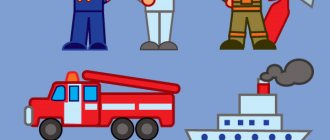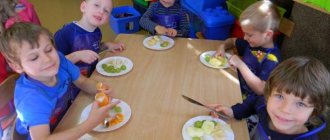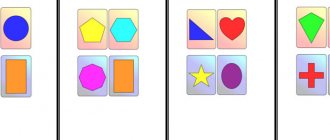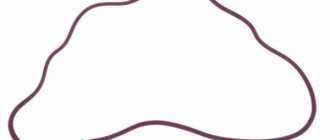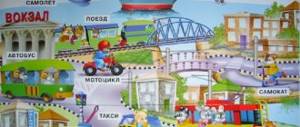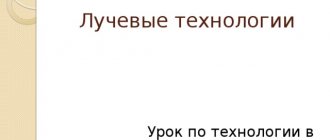Airplane piggy bank
You will need: plastic bottle (0.5 l), colored paper, double-sided tape, pencil, scissors, ruler.
Master Class
- Make a hole for coins in the center of the bottle in this way: make a rectangular slot 2 cm long and 0.5 cm wide.
- Draw the body and tail of the plane in an "L" shape, then cut them out.
- Glue 2 blanks to the bottle using double-sided tape, then cut a hole for coins.
- Make engine stands in this way: draw 2 rectangles measuring 10x3cm on colored paper, roll them into tubes, then glue them to the bottom of the body on both sides.
- Draw the airplane wings, cut them out, then glue them on.
- Create a propeller: trace the cover onto the paper, then make a larger circle and draw the blades.
- Cut out the propeller, place it on the neck of the bottle and close the lid.
- Cut out 8 circles and glue them as windows on both sides.
- Prepare 2 stripes and glue them onto the tail.
The piggy bank airplane made from a plastic bottle is ready! I recommend watching this video!
How to make an airplane from a plastic bottle and colored paper
Areas of practical use
Despite the ability for fast and, most importantly, economical movement, the scope of application of a hovercraft on the surface of the earth is significantly limited. Asphalt areas, hard rocks with the presence of industrial waste or hard stones are absolutely unsuitable for it, since the risk of damage to the main element of the hovercraft - the bottom of the cushion - increases significantly.
Thus, the optimal hovercraft route can be considered one where you need to swim a lot and drive a little in places. In some countries, such as Canada, hovercraft are used by rescuers. According to some reports, devices of this design are in service with the armies of some NATO member countries.
War plane
You will need: plastic bottle (0.6 l), caps, cocktail tubes, cardboard, newspaper, PVA glue, brush, gouache, glue gun.
Master Class
- Cover the bottle with pieces of newspaper using PVA, then leave it to dry.
- Cut out the tail, wings and propeller of the airplane from cardboard.
- Cover the workpieces with pieces of newspaper and pva, then leave to dry.
- Make the chassis (wheels) in this way: glue 2 caps and a tube together with a glue gun, as shown in the image.
- Use a glue gun to glue the tail onto the neck of the bottle and the wings just below the center of the bottle.
- Use a gun to glue the cork to the bottom of the bottle, then glue the screw to the cork.
- Glue the chassis.
- Glue cocktail tubes crosswise between each wing.
- Paint the plane and wait for it to dry.
A military plane made from a plastic bottle is ready! I recommend watching this video!
How to Make a Flying Airplane using Plastic Bottle and Cardboard
How you can explore air transport with your child
You can start studying with several cards, 3-4 times a day, show the cards to your child for 5-10 seconds and clearly state the name of the aerial equipment. The next day, in addition to the ones you have studied, show your child several new pictures.
Complicate the tasks over time: ask the child to name the cards independently or choose one or another card from the pictures laid out in front of him.
During classes, you need to briefly talk about each object being studied, for example: a passenger aircraft is designed to transport people and luggage, a transport aircraft transports cargo, a specialized firefighting aircraft is equipped with water tanks and is designed to extinguish fires from the air, and so on.
Gradually increasing the amount of information to 10-12 sentences for each object.
Using such cards, the child will very quickly master all types of air transport and will be able to easily recognize them.
Classes using Doman cards perfectly develop a child’s visual memory, attentiveness, and speech. This is a great exercise for the mind.
Simple airplane made from a plastic bottle
You will need: plastic bottle, scissors, knife, colored cardboard, pencil, ruler.
Master Class
- Draw 2 identical stripes for the wing on the cardboard, then cut them out.
- Draw 3 small stripes for the tail, then cut them out.
- Create a propeller: trace the cover onto the paper, then make a larger circle and draw the blades.
- Cut out the propeller, place it on the neck of the bottle and close the lid.
- Using a knife, make 3 cuts in the tail area and 2 cuts for the wings.
- Insert 3 strips into the cuts to form the tail of the airplane.
- Secure the airplane wings.
A simple airplane made from a plastic bottle is ready! I recommend watching this video!
Airplane made from bottles. First flight.
Hovercraft as a means of transportation
Hovercraft, which bears the sonorous technical term “hovercraft,” differs from traditional models of boats and cars not only in its ability to move on any surface (pond, field, swamp, etc.), but also in the ability to develop decent speed. The only requirement for such a “road” is that it must be more or less smooth and relatively soft.
However, the use of an air cushion by an all-terrain boat requires quite serious energy costs, which in turn entails a significant increase in fuel consumption. The operation of hovercraft (hovercraft) is based on a combination of the following physical principles:
- Low specific pressure of the hovercraft on the surface of the soil or water.
- High speed movement.
This factor has a fairly simple and logical explanation. The area of contact surfaces (the bottom of the apparatus and, for example, the soil) corresponds to or exceeds the area of the hovercraft. Technically speaking, the vehicle dynamically creates the required amount of support thrust.
Excessive pressure created in a special device lifts the machine from the support to a height of 100-150 mm. It is this cushion of air that interrupts the mechanical contact of the surfaces and minimizes the resistance to the translational movement of the hovercraft in the horizontal plane.
How to make Doman cards yourself:
Print the cards on thick paper or cardboard, 2, 4 or 6 pieces per sheet. To conduct classes using the Doman method, the cards are ready, you can show them to your child and say the name of the picture.
Good luck and new discoveries to your baby!
Educational video for children (toddlers and preschoolers) made according to the Doman method “Prodigy from the cradle” - educational cards, educational pictures on various topics from part 1, part 2 of the Doman method, which can be watched for free here or on our Channel Early Childhood Development on YouTube
